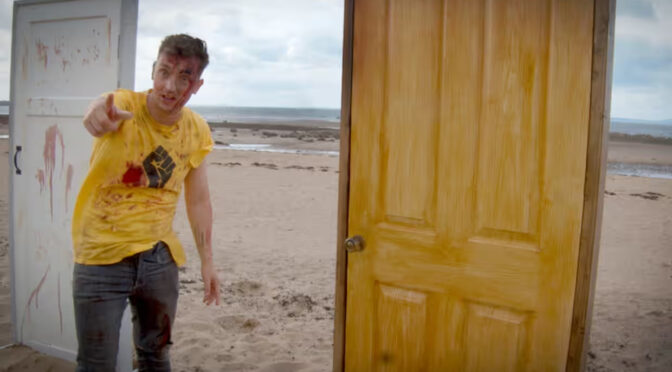After a graffiti artist disappears, budding documentary makers Sam and Ash traverse different worlds to track her down. Seasoned found-footage director Graham Hughes puts in the effort with a meagre budget, but a bit of inspired cinematography isn’t enough to detract from unconvincing acting and wooden dialogue.
HOSTILE DIMENSIONS is a multiverse film. But not the kind of multiverse involving Marvel superheroes and multimillion-dollar budgets, nor the whacky sausage fingers and googly-eyed oddities of EVERYTHING EVERYWHERE ALL AT ONCE. It’s appropriately meta that the heroines of Graham Hughes’ film are low-budget found-footage filmmakers considering Hughes’s history of low-budget productions, particularly his previous found-footage film DIARY OF A VLOGGER. Sam and Ash are down on their luck after their last unsuccessful project but start to see some potential in another documentary when amateur graffiti artist Emily goes missing. As they explore the building where she disappeared, with plenty of steadicam footage following this exploration, they eventually come across a door into another dimension.
The soundtrack is reduced to little besides the jarring violins that screech over the intertitles, which works to an extent. This reduced sound makes moments of horror slightly more impactful, but these moments feel somewhat diminished with the evident microbudget provided. When a shadowy creature jumps out from a door, it’s a poor, PowerPoint-standard design that encourages more of a chuckle than a scream. However, there are occasional inspired moments, like whales flying through the sky in one of the fantastical worlds. The main problem is that the plot never stops to explain why and how all these universes are connected and what reason the underdeveloped characters have for being able to access them in the first place. There’s no emotional catharsis in bringing the worlds together, making it difficult to feel anything when we reach the underwhelming crescendo.
“There’s no emotional catharsis in bringing the worlds together, making it difficult to feel anything when we reach the underwhelming crescendo.”
According to more avant-garde directors like Robert Bresson, there’s a special power in putting individuals on screen who have never acted before and have no formal training. These “models” (a term that Bresson uses to describe untrained actors) present a wholly original opportunity for the camera. The cast has acted as a group before in similar low-budget projects like DEATH OF A VlOGGER, but the ensemble’s acting talent here isn’t particularly convincing, with the largely stilted dialogue not helping the overall effect. You could argue that both factors should benefit the overall effect of the low-budget found-footage film, but the elements don’t synchronise effectively enough. The more surreal, comedic sequences have a certain indie appeal. However, it’s hard to get fully on board when there’s so little explanation behind the doors into these alternative worlds, which constitute the film’s central gimmick.
In the final result, the production’s finest star turns out to be not a human nor a monster, but a talking dog. The pooch – credited as Lucy the dog – only pops up in a few scenes but manages to make maximum impact with some impressively deep baritones. It’s just a shame that her human counterparts are barking up the wrong tree.

